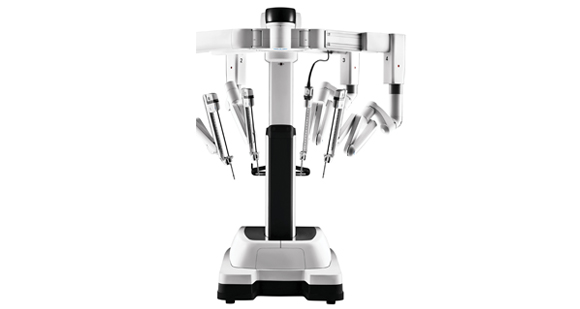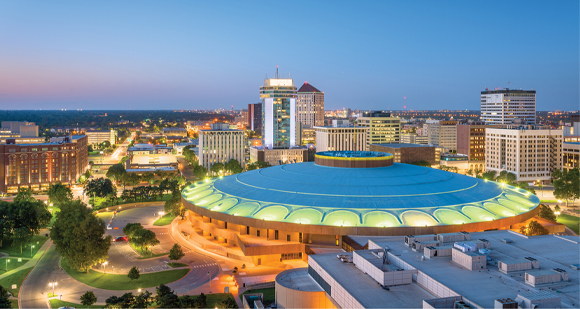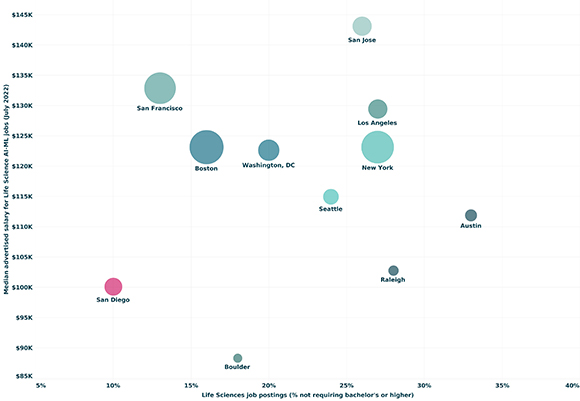|



|
FROM SITE SELECTION
MAGAZINE, NOVEMBER 2022 ISSUE
|

|
MEDICAL DEVICES
Intuitive Surgical feels right about investing $500 million in the Peach
State at a site a stone’s throw from Site Selection’s Peachtree Corners
HQ.
|
|

|
KANSAS
The $4 billion investment from Panasonic Energy is just one example of
FDI in the state, where employment by foreign investors grew by 33%
between 2014 and 2019.
|
|
 
|

Cover design by Sean Scantland
|
The third edition of our annual look at all aspects of what everyone
calls the most important site selection factor is now live and ready to
deliver business intelligence to you and your team. The publication
includes industry partnership case studies, trend analysis and examples
of best practices; Investment Profiles of Georgia and Canada; the Texas
Economic Development Connection Intelligence Report; directories of
Manufacturing Extension Partnership organizations and workforce boards
in every state; and incisive contributions from contributors at BLS &
Co., Lumina Foundation, Prologis, Fisher Phillips, San Bernardino County
and the Century Foundation.
|
|
|
ARKANSAS ECONOMIC
DEVELOPMENT GUIDE 2022-23
|

|
TIMBER
What the state’s sustainable approach to wood production means for the
future.
|
|

|
OUTDOOR RECREATION
A how-to guide for discovering a new kind of outdoor adventure.
|
|
|
SITE SELECTION
RECOMMENDS
|

|
Even as the region lags other, larger markets in job postings, San Diego
is cost competitive when it comes to salaries in the AI/ML and life
sciences sectors.
Graph courtesy of San Diego Regional EDC Research Bureau
|
|
For a smart analysis of a region’s strongest cluster and its
potential for further growth, see the San Diego Regional EDC
Research Bureau’s report “Diagnosing the Future: AI and San
Diego’s Life Sciences Cluster.” Among its findings:
In addition to the life sciences’ $27 billion annual
economic impact in the region, metro San Diego boasts more
than 15,000 professionals across all industries in the
artificial intelligence and machine learning sectors.
Moreover, the region in 2021 attracted more than 13% of all
domestic venture funding in life sciences.
|
|
|
China
As it denies the U.S. Commerce Department’s finding last week that the
company is circumventing tariffs by investing in Southeast Asia
countries (by acquiring Vina Solar in Vietnam), China’s LONGi Green
Energy Technology is moving forward with plans to construct a 10-GW
monocrystalline solar module plant in Heshan in Guangdong Province.
Around the same time in November, China’s Risen Energy (not on the
Commerce Department’s naughty list) committed to its own 10-GW solar
cell plant in Chuzhou in Zhejiang Province. In August, LONGI reported
that it shipped 39.62GW of monocrystalline silicon wafers during the
first half of 2022, and saw its operating activities generate a net cash
flow of 10,698 billion yuan, an increase of 1,162.43% over the same
period in 2021. Among other activities, it’s opened a new Central R&D
Institute at its global headquarters in Xi’an, Shaanxi Province, that
the company expects to attract more than 4,000 “high-end scientific
research talents.”
Turkmenistan
As reported by Business Korea and other outlets, Hyundai Engineering has
signed an MOU with the Federation of Turkmenistan Industrial
Entrepreneurs for a $1.4 billion ammonia urea fertilizer plant in the
Balkan region in the western part of the country. The project continues
a series of investments Hyundai began making in the country in 2009,
when it invested the same amount in a gas desulfurization facility
project. According to Korea Economic Daily, the day after the Hyundai
announcement last week, fellow Korean concern Daewoo said it’s also
signed MOUs: one for a phosphate fertilizer plant in Turkmenabat and
another for an ammonia urea fertilizer plant in Balkan.
|
|

|
Photo courtesy of Northrop Grumman
|
|
At a U.S. Air Force facility in Palmdale, California, on Friday,
Northrop Grumman and the Air Force unveiled the B-21 Raider aircraft.
“The B-21 Raider defines a new era in technology,” said Northrop Grumman
Chair, CEO and President Kathy Warden, “and strengthens America’s role
of delivering peace through deterrence.” The aircraft is named in honor
of the Doolittle Raids of World War II. Noting that the new aircraft was
designed and engineered at Northrop Grumman’s facility in Melbourne,
Florida, Frank DiBello, president and CEO of Space Florida, said,
“Nearly 10 years ago, Space Florida worked alongside Northrop Grumman to
finance their Melbourne operation so that moments like today would
become a reality.”
|
| |

